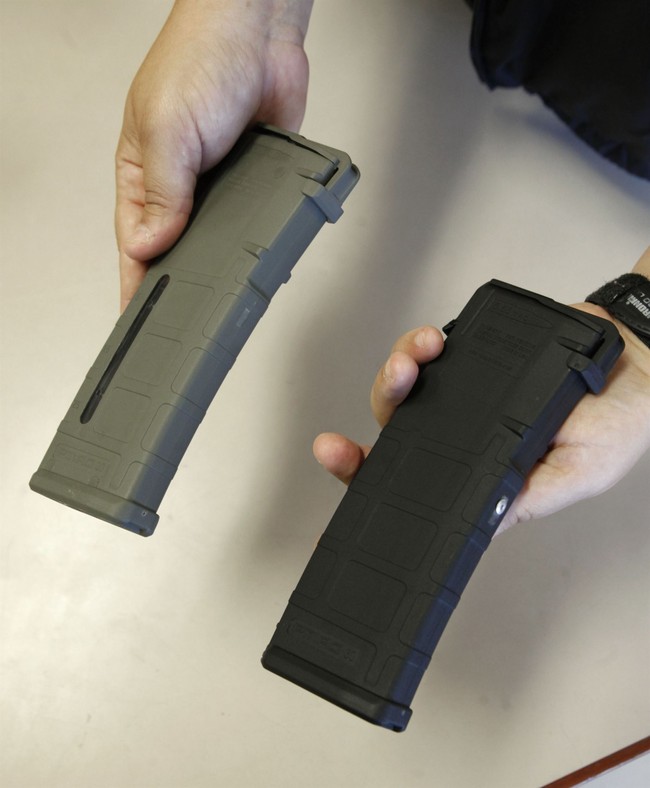A spate of Second Amendment-related cases are waiting for consideration by the nine justices on the Supreme Court once they return from their summer break, and the latest is a challenge to Washington State’s ban on magazines that can hold more than ten rounds of ammunition.
A cert petition in Gator’s Custom Guns v. State of Washington was filed with the Court last week, and Washington’s attorney general has until September 8 to issue its response. In their petition, attorneys Paul Clement and Erin Murphy (who were the attorneys of record for the plaintiffs in the Bruen case), argue that the state’s Supreme Court was egregiously off-base when it upheld the state’s magazine ban by asserting that magazines aren’t protected by the Second Amendment, even if they are in common use for lawful purposes.
… after the superior court correctly concluded that Washington’s ban violates the Second Amendment, the Washington Supreme Court reversed, holding that magazines capable of holding more than ten rounds are not “Arms” within the meaning of the plain text of the Second Amendment, and therefore are not even presumptively protected. Indeed, the court posited that magazines are never protected by the Second Amendment, no matter their size, which would mean that states could effectively ban semiautomatic firearms entirely without ever having to reconcile such efforts with our Nation’s historical tradition of firearms regulation.
I don’t know that the Washington Supreme Court’s decision would allow for a ban on semi-automatic firearms, but it most definitely opens the door to bans on detachable magazines, no matter their capacity.
As Clement and Murphy point out, the first state laws limiting the capacity of firearms didn’t come into place until the 1990s, and the first federal statute (which was a local D.C. law passed by Congress that prohibited the possession of firearmsthat “shoot[] automatically or semiautomatically more than twelve shots without reloading”) wasn’t adopted until 1932. The national tradition of gun ownership, particularly at the time of the Founding and the ratification of the Fourteenth Amendment, didn’t involve capping a firearm’s capacity in any form, even as multi-shot firearms became the standard.
That didn’t matter to the state Supreme Court, though, because a majority of justices decided that magazines aren’t arms at all, and have no protection whatsoever under the Second Amendment. In doing so, though, the Court essentially rewrote what SCOTUS has said about what constitutes a bearable arm.
This Court has made crystal clear that “the Second Amendment’s definition of ‘arms’” extends to all bearable “instruments that facilitate armed self defense.” Yet the Washington Supreme Court did not ask whether the magazines ESSB 5078 outlaws satisfy that “definition.” In fact, it explicitly rejected that definition. According to the Washington Supreme Court, “not all instruments that ‘may plausibly be used for self-defense’ are … ‘arm[s].’” So despite having professed adherence to “the United States Supreme Court precedent that gives meaning to the plain text of the Second Amendment,” the Washington Supreme Court forged its own path, asking not whether the magazines Washington has outlawed facilitate self-defense (as Bruen and Heller require), but whether they are “designed as weapons,”
The state Supreme Court concluded that detachable magazines are not ‘arms’ because they are “designed to be attached to a weapon in order to modify it by increasing that firearm’s ammunition capacity, and they are not designed for use as a weapon themselves.”
It’s true that detachable magazines aren’t mean to be used as weapons by themselves, but they are designed to facilitate armed self-defense, which, under the Supreme Court’s previous guidance, means that they are protected by the Second Amendment.
In addition to Gator’s Custom Guns, SCOTUS will have a second case dealing with magazine bans to consider this fall. The cert petition in Duncan v. Bonta, which challenges California’s ban on magazines that can hold more than ten rounds, is due on August 17. Though U.S. District Court Judge Roger Benitez ruled the law violates the Second Amendment and a three-judge panel on the Ninth Circuit affirmed his decision, an en banc panel of Ninth Circuit judges overruled those decisions and upheld the law after also concluding that “[a] large-capacity magazine is … an accessory or accoutrement, not an ‘Arm’ in itself,” and therefore isn’t protected by the Second Amendment.
Interestingly, Paul Clement’s colleague Erin Murphy is the counsel of record in Duncan, which may help persuade the Court to take both cases and consolidate them before oral arguments take place. Of course, the justices could decide not to address the issue at all, much like they did with bans on so-called assault weapons last term when they rejected the Snope case after months of consideration in conference.
There are other mag ban cases pending in the lower courts, including the multiple lawsuits taking on Illinois’ ban on both “assault weapons” and “large capacity magazines”, but it could be another year before those lawsuits reach the High Court. Duncan and Gator’s Custom Guns have been fully decided on the merits and are ripe for review now… and hopefully will be among several 2A cases the Court will take up in its next term.
Editor’s Note: Radical leftist judges are doing everything they can to hamstring our Second Amendment rights.
Help us hold these judges accountable for their unconstitutional rulings. Join Bearing Arms VIP and use promo code FIGHT to get 60% off your membership.
Read the full article here











![Iowa Democrat Caught Red-Handed, Her Campaign Persona Unravels in Real Time [WATCH] Iowa Democrat Caught Red-Handed, Her Campaign Persona Unravels in Real Time [WATCH]](https://www.lifezette.com/wp-content/uploads/2025/11/2025.11.26-07.18-lifezette-6926a9cf37068.jpg)